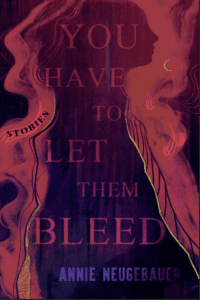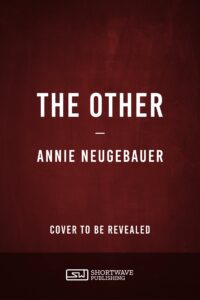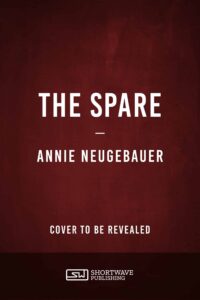I’ve been experimenting with some new (and old) writing tools lately, so I thought I would share my experiences with them. This Monday I’m reviewing the first five (from research to drafting), and next Monday I will share the second five (from editing to time management).
Please note that all of these ratings and reviews are my opinion. For each tool here, including the ones I gave one and two stars, I personally know people who absolutely swear by them – so take it all with a grain of salt.
My Rating System:
* Not worth it
** Worth a try
*** Great stuff
**** Indispensable
Google Earth
Uses: Research for settings you can’t visit in real life.
Pros: Free and relatively easy to use. Allows you to “fly” over places you’ve never been, and even “sit down” into some for a 3-d effect.
Cons: Can be laggy/slow. Some more remote locations are not very visible.
My rating: *** Great stuff
Where to get it: here
Tips to use it: Experiment with the “layers” you can add and take away from the map. And don’t forget to save your most-visited research spots to your “Places” for a quicker find next time.
Children’s Cross-section Books
Uses: In-depth research and visualization.
Pros: Visual representation of your topic broken down into simple explanations. Much less overwhelming and confusing than huge volumes of written research.
Cons: There can be a limited selection, and even books about your topic don’t always show exactly the things you want them to show. (For example, I wanted a book about 17th century war ships but could only find one about 18th century war ships.)
My rating: *** Great stuff
Where to get it: Your local bookstore or Amazon – but don’t forget to click through Denton Poets’ Assembly first! (It’s the same shopping experience for you, but a small percentage of your total purchase goes to support a Denton non-profit poetry organization. Just click on the Amazon banner at the top of the page.)
Tips to use it: I highly recommend Stephen Biesty’s Incredible Cross-Sections. And I also suggest looking at a cross-section as one of the very first steps, before you write your historical fiction or whatever, because some facts that surprise you might be vital to your plot or setting.
Microsoft Word
Uses: Drafting, editing, formatting.
Pros: Everyone uses it. Almost every venue (publications, agents, editors) ask you to submit in the .doc or .docx formats. Word is the bread and butter of a writer’s meal.
Cons: Cost. Buying Microsoft Office isn’t cheap, but it’s necessary. There’s also a learning curve for each new version, and sometimes there are annoying compatibility issues with .doc and .dox, etc.
My rating: **** Indispensable
Where to get it: Your local computer/office supply store, or Amazon – but don’t forget to click through Denton Poets’ Assembly first!
Tips to use it: Check out some tips on this site.
Dragon Naturally Speaking
Uses: Oral drafting.
Pros: If you’re facing Carpal tunnel, tendonitis, or some other type of hand/wrist- immobilizing injury, this is pretty much the only way to write without pain.
Cons: The program takes a long time to “train,” meaning you have to be very, very patient to make it useful. I still haven’t gotten to the point where I can speak naturally and have it be 90% correct, although people who have swear it’s worth it. It’s also very slow, laggy, and generally frustrating.
My rating: * Not worth it (if you can type just fine) / ** Worth a try (if you’re patient and/or desperate)
Where to get it: Your local computer/office supply store or Amazon – but don’t forget to click through Denton Poets’ Assembly first!
Tips to use it: Many people have trouble using the crummy headphone set it comes with, so if you’re going to make the time and money investment, I’d say go ahead and buy a decent headset, too.
Scrivener
Uses: Plotting, re-arranging, and brainstorming your chaotic manuscript.
Pros: Multiple features all in one place. Scrivener is like the corkboard with index cards, the 3-ring binder, and the files of research all rolled into one digital program. If you don’t write in order, or need to do major structural work on a book, Scrivener will save you time and paper. If you’re a poet compiling your poems into a chapbook or manuscript, Scrivener will save your sanity.
Cons: Not great for drafting, fine-tuning, or final printing. Also, very overwhelming if you don’t take the tutorial, which lasts about 2 hours. You have to have great patience to make this tool useful, as it has dozens of features to learn and consider.
My rating: ** Worth a try (novelists) / *** Great stuff (poets)
Where to get it: Start with your free 30-day trial.
Tips to use it: My favorite thing so far is putting different media into folders for inspiration. I created a folder of inspiring photos — like Pinterest/Tumblr just for me & this book — and I can arrow through them to create a flipbook effect that almost looks like a book trailer. If I do this while playing some of my inspiration songs, the effect is pretty awesome. More tips here at Writer Unboxed.
Closing
Those are my thoughts on some tools I’ve come to love and loathe. Do you have any writing tools that you’ve found indispensable over the years? Any tips to add to the ones I’ve listed?
Part 2 to come next Monday!
Share this:





Hi Annie! An alternative to Dragon is the built-in recognition software that comes with Windows 7. It’s apparently pretty close to Dragon’s current capabilities (some even prefer it) and, the best part, it’s free! If someone has Windows 7 and wants to try Dragon, I’d suggest trying the Windows 7 version first. Here’s a great post I found about it a few months ago: (http://www.trigonit.com/tech-blog/bid/32089/Windows-7-Features-Speech-Recognition-VS-Dragon-Naturally-Speaking – the second part is better, but you have to read the first part.)
I’ve never thought of using Cross-Section books as research tools (why, I don’t know) but I’ll be sure to consider it now! Thanks!
And, of course, thanks for linking my Word 2007 article! I plan on doing more in the future (when I finish Fast Draft for sure).
Hey Dahnya! I’ve never tried that software, since I don’t have Windows 7, but it sounds pretty good. Thanks for sharing that.
And my pleasure! The cross-sections have become one of my favorite resources, for sure.
Thanks, Dahnya for the heads up and link on Windoes 7 voice recognition software!
Thanks for the tip and the link, Dahnya! I read the article, figured out how to find the recognition software in Windows 7 and did the tutorial (extremely frustrating, but I got through it). After that I used voice commands to open Word and type about a dozen sentences. Then I wrote an email to my husband using only voice commands. I even went to my Sent box (using voice) and told it to double-click so I could see the email I just wrote. Very cool! This is great because I’ve lost the CD for loading Dragon so I can’t put it on my new laptop. But hopefully I won’t need Dragon anymore, if the W7 software will cooperate.
Wow, that’s awesome! Kind of makes me wish I had Windows 7.
I love Scrivener! Especially its research capabilities. You can save web pages inside the program and refer to them with a simple click. I’ve saved everything from maps to pictures of clothing and jewelry. I like the character sketches too, but I haven’t used them as much with my current WIP. It’s also designed to export your work in multiple formats, including .MOBI which is the Kindle format.
That’s a great tip about the webpages! Do they still work if you’re offline? That’d be extra handy, since I like to turn off my wireless while I work sometimes. I also didn’t know about the .MOBI format… great tips, Melissa! Thanks for commenting.
Yes, you can access the webpages offline, they become part of your Scrivener document.
This is great! I’d never thought about using Google Earth as a writing tool, but I think I will now. Very good idea : )
I know that for short films and such writers/directors often use “story boards”. For certain film projects, I’ve created a couple of basic (very, very basic) story boards with Microsoft Movie Maker. It kind of brings the project to life and gives me an idea of which direction I want to go in. I’ve been wanting to use this technique for my writing projects too, especially for short stories which need to be very succinct.
Oh yeah, I’ve used Google Earth for locations from NYC to rural Romania; it’s fabulous for that. Although I would rather go on vacations to these place, but we can’t be too picky, can we? =)~
If you like storyboarding a lot, you might check out Scrivener, too. It has a special setting specifically for screenplay writers. That’s basically what it is: a giant digital story board. I’ve never tried Microsoft Movie Maker, though, since I don’t make movies; sounds interesting.
Gah! I can’t believe I never thought to use Google Earth to check out places I can’t visit in person. Sometimes I amaze myself (and not in a great way). 😉
Hehe, don’t feel bad — apparently both Google Earth and the cross-section books were totally news to a lot of people!
I miss WORD! I got a Mac and yes, Pages is very similar, but it’s not exactly the same. I can’t quite get used to it.
No Word?! I don’t think I could survive it. I know that Macs are just “so much better” and stuff, but I don’t think I’ll ever switch. I am a creature of habit, and I like what I know! And I know Word, lol.
Word is available for Mac. It’s not cheap, but worth the money if you really love the program.
Love my Scrivener, but a virus ate it along with the rest of my computer. I can reload it for free but am having trouble doing so.
If you have a mic for your Wii, that works really well with Dragon Naturally speaking and because of the long cord you are free to move about the room a bit while you dictate.
Great post as always, Annie.
Ooo, viruses are nasty. I’m sure you already know this, but have you tried deleting the old program completely? Sometimes if there are parts of it left it throws off the new installation.
We don’t have a Wii. That’s a good tip though, for people who do. Thanks Regina!
I have found Dragon enormously helpful, either to speed my work when I need to be time efficient, or to capture my tumbling thoughts when I can’t type fast enough to keep up with them. I fell out of the habit of using it (just too lazy to open the program), but after reading your post I’m going to start using it again.
Either that, or take Dahnya’s tip about the voice recognition software built into Windows 7 – at least to see if it’s more accurate than Dragon. I have to carefully proofread every Dragon doc I create, and it likes to make Freudian slips too. ;~)
Wow,
see? I find Dragon more of a nuisance than an aid, but you clearly love it. I
think I’m too much of a control freak to like it; I can’t stand when it messes
up my punctuation and types the wrong words, etc. Freudian slips indeed. =) You
need the Dirty Pun Catcher for that program! But seriously, I’m glad some
people get use out of Dragon. Wish it worked better for me.